Key takeaways
- Understanding RESTful APIs involves recognizing their stateless nature and resource-based structure, which enhances scalability and usability.
- Flask’s simplicity and flexibility make it an ideal choice for building RESTful APIs, allowing developers to grow with their projects.
- Effective handling of requests and responses, along with proper error management, is crucial for creating user-friendly APIs.
- Implementing authentication early, especially through token-based methods like JWT, is essential for securing applications and improving user experience.
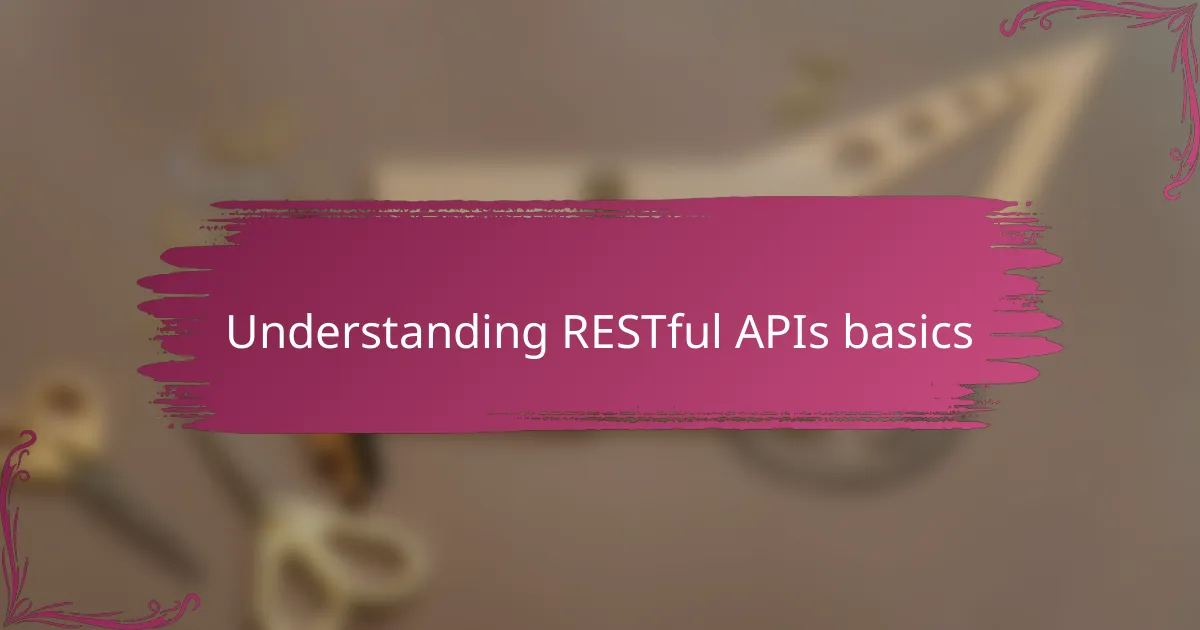
Understanding RESTful APIs basics
When I first encountered RESTful APIs, I was struck by how elegantly they mimic the way we communicate on the web—using standard methods like GET, POST, PUT, and DELETE to manage data. It felt like speaking a universal language that both client and server could instantly understand. Have you ever wondered why simplicity often leads to such powerful tools?
From my experience, understanding the stateless nature of REST is key. Each request is independent, meaning the server doesn’t remember previous interactions. At first, this threw me off because I was used to systems that kept track of every detail. But then I realized how this statelessness makes APIs scalable and reliable, which deeply influenced how I approached building them.
Also, grasping the idea of resources and their representations was a bit abstract until I started designing my own endpoints. It’s fascinating how every piece of data—be it a user profile or a blog post—can be treated as a resource with its own URL. This mindset helped me organize my code better and made my APIs intuitive to use. Have you ever tried explaining your API design to someone else and noticed how a resource-focused approach clarifies things? That’s when I knew I was on the right track.
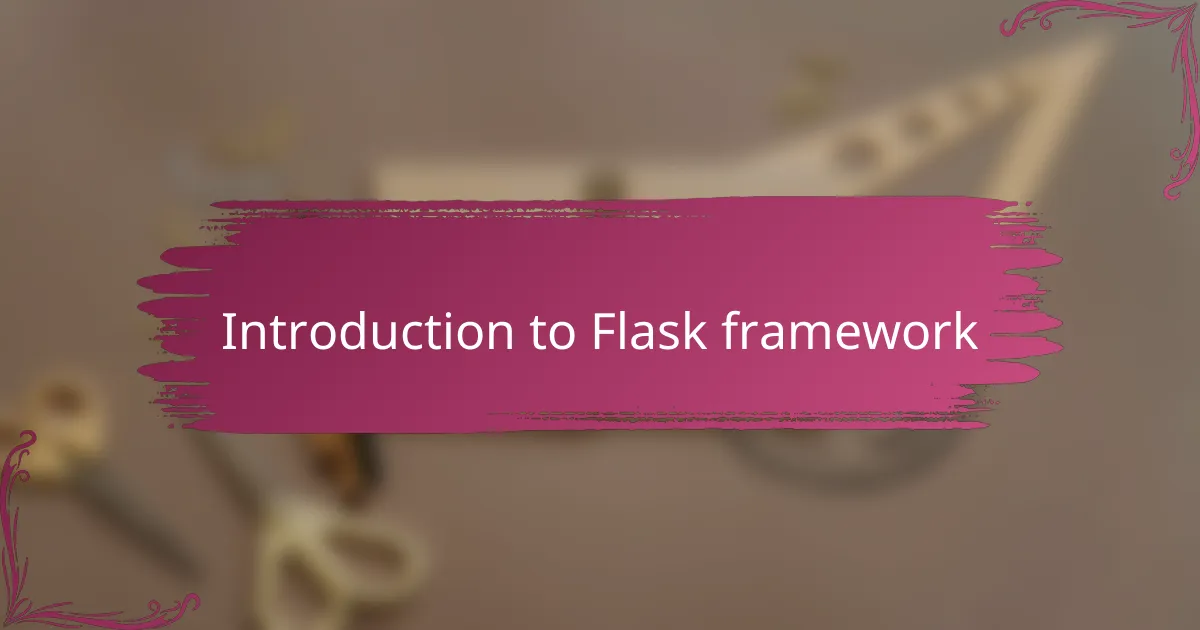
Introduction to Flask framework
Flask caught my attention early on because of its simplicity and flexibility. Unlike some heavyweight frameworks, it doesn’t force you into a strict structure, which felt refreshing when I was starting out. Have you ever tried a tool that just lets you build things your way without wrestling with complicated setup?
One thing I appreciated right away was Flask’s minimalist core, which provides just the essentials for building web apps. This made it easier for me to grasp how the pieces fit together without getting overwhelmed. When you compare it to bigger frameworks, Flask feels like a blank canvas waiting for your ideas.
Of course, as I dug deeper, I discovered Flask’s vast ecosystem of extensions that add powerful features whenever I need them. This balance between simplicity and extensibility really resonated with me—it’s like having a tool that grows with your skills and project requirements. Have you found that kind of flexibility in other frameworks? For me, that’s why Flask became my go-to choice for building RESTful APIs.
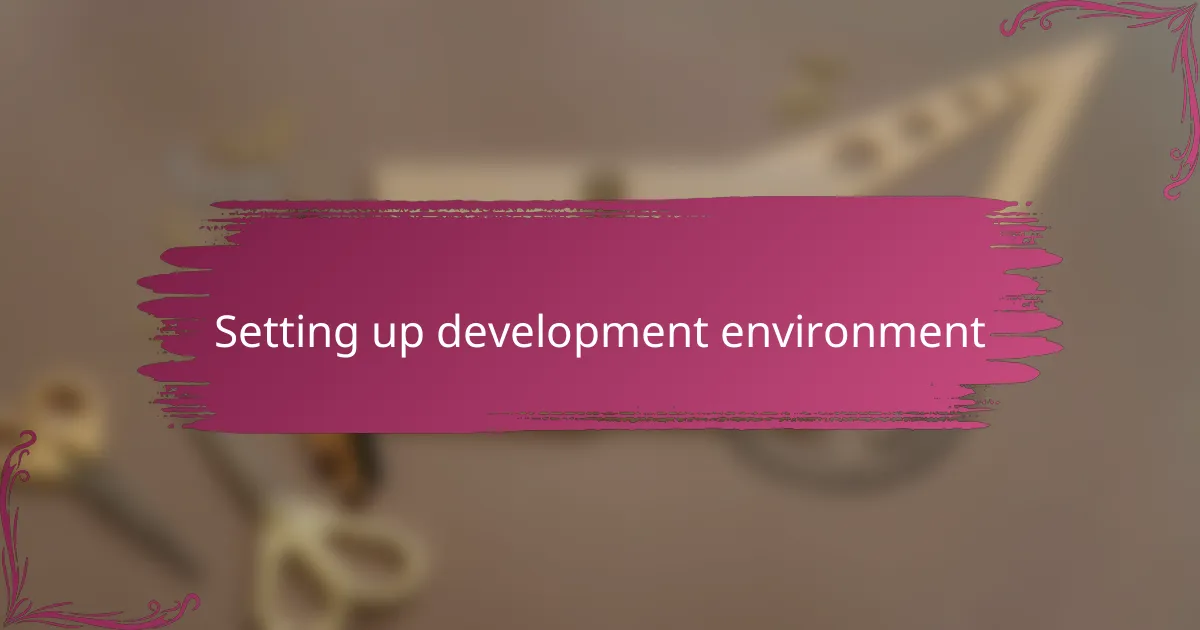
Setting up development environment
Setting up my development environment was like laying the foundation before building a house—I knew this step had to be solid. I started by installing Python and creating a virtual environment to keep my project dependencies clean and isolated. Have you ever run into weird package conflicts? That was a nightmare I wanted to avoid from the get-go.
Next came installing Flask using pip, which felt straightforward but powerful. I remember the satisfaction of seeing that first “Hello, World!” response in my browser—it was a little victory that made all the setup worth it. Getting these basics right gave me confidence to dive deeper without worrying about tool glitches.
I also made a point of choosing a good code editor with Flask support—it made coding and debugging so much smoother. Sometimes small choices like these make a big difference in workflow. Have you noticed how the right environment can either fuel your motivation or drain it? For me, it definitely kept the momentum alive in those early stages.
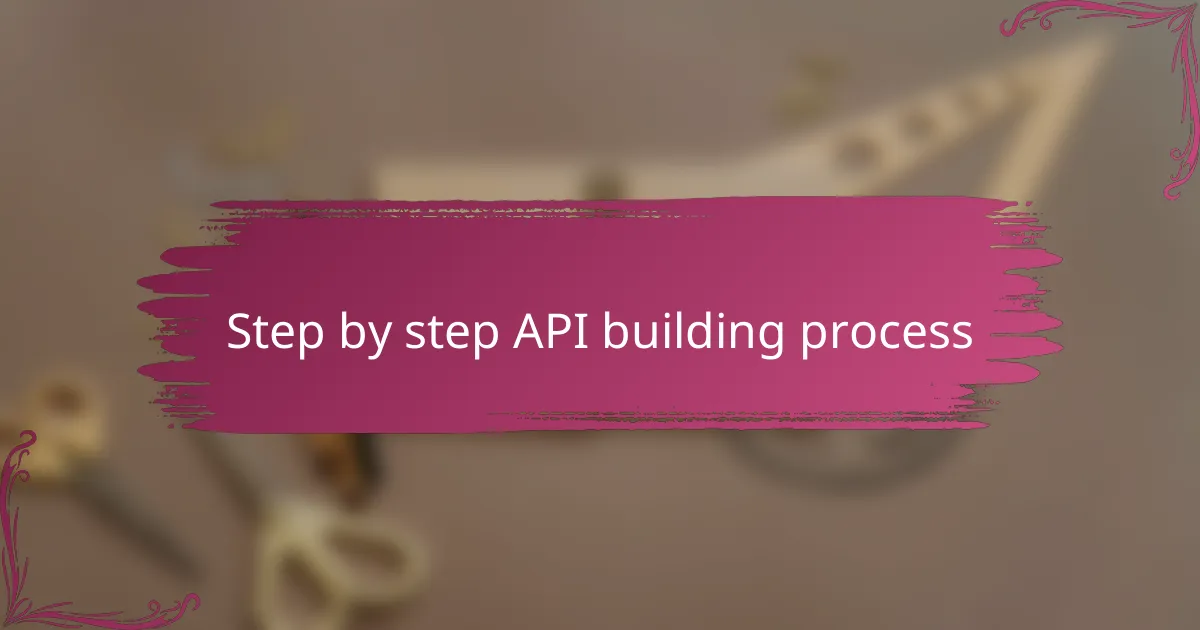
Step by step API building process
Once the environment was ready, I dove into defining my API endpoints step by step. I started by mapping out the resources my app would handle and then linked each to corresponding HTTP methods like GET or POST. Have you ever felt that satisfying click when everything logically fits together? That moment made me appreciate how planning simplifies the actual coding.
Writing each route handler was like crafting a small story—telling the server what to do when called upon. I remember debugging my first error response; it was frustrating but also a crucial lesson in making APIs resilient and user-friendly. Isn’t it amazing how those early stumbles deepen your understanding and eventually lead to cleaner, more reliable code?
Finally, testing each endpoint became my ritual. I used tools like Postman to send requests and check responses, refining the API until it behaved exactly as intended. This phase felt like tuning an instrument—sometimes tedious, but absolutely necessary to produce harmony between client and server. Have you tried testing API workflows this way? I found it not just helpful, but rewarding as I saw tangible results from my efforts.
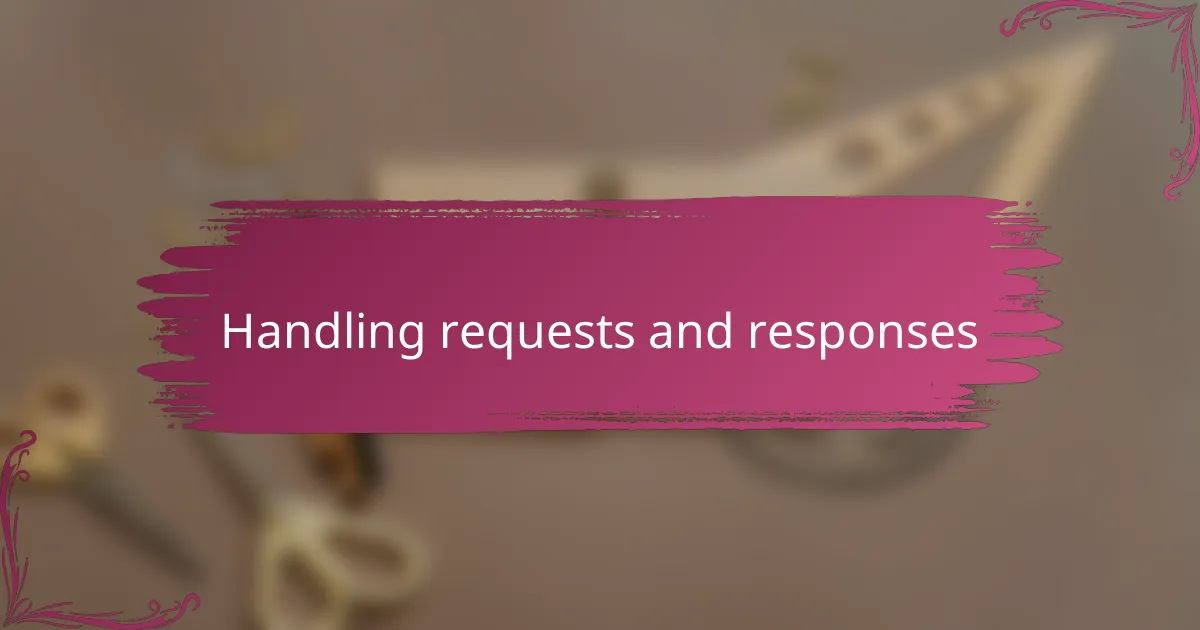
Handling requests and responses
Handling requests and responses in Flask felt surprisingly straightforward once I wrapped my head around how Flask maps HTTP methods to Python functions. I remember the first time I coded a POST route to accept JSON data—I was both nervous and excited, wondering if my server would understand the incoming request correctly.
What really helped me was learning to use Flask’s request and response objects effectively. For example, accessing request data with request.get_json() made parsing payloads intuitive, but formatting responses with jsonify() gave my API that professional polish. Have you noticed how proper response formatting can make debugging so much easier?
One tricky moment I encountered was managing error responses gracefully. Instead of letting unexpected inputs crash my app, I started crafting custom error messages with appropriate HTTP status codes. This not only improved user experience but also made me realize how crucial clear communication is between client and server—it’s like being polite in a conversation, isn’t it?

Implementing authentication in Flask APIs
Implementing authentication in Flask APIs was a turning point for me—it suddenly made my projects feel more real and secure. At first, I struggled with choosing the right method, but then I found token-based authentication, specifically JSON Web Tokens (JWT), to be a game changer. Have you ever noticed how statelessness in REST clashes with traditional sessions? JWT neatly solves that dilemma by embedding user identity within each request.
I remember the challenge of integrating Flask-JWT-Extended; setting up access and refresh tokens took some trial and error, but the library’s clear documentation kept me grounded. What really clicked was realizing that authentication isn’t just about securing endpoints, but also about managing user experience—like refreshing tokens without annoying the user constantly. It was satisfying to see those protected routes respond correctly only when valid tokens were presented.
One insight I gained is that implementing authentication early on saves a lot of headaches later. Adding decorators to routes to require authentication felt elegant and straightforward. Have you ever completed a feature only to realize halfway through that you forgot security? That realization pushed me to treat authentication as a fundamental building block, not an afterthought.

Lessons learned from real projects
Real projects taught me that thorough planning can save hours of frustration later. Early on, I rushed into coding endpoints without fully mapping out resource relationships, only to hit confusing bugs that forced me to backtrack. Have you ever felt that sinking moment when your API just doesn’t behave as expected? That experience impressed upon me the value of laying a clear blueprint before writing a single line of code.
Another lesson came from error handling. Initially, I treated errors as mere obstacles to fix quickly, but over time I realized they’re opportunities to improve the user’s experience. Crafting meaningful error messages and returning proper HTTP status codes transformed my APIs from brittle to user-friendly. Doesn’t it make you appreciate how a well-handled error can actually build trust in your service?
Lastly, real projects revealed how crucial consistent testing is. Skipping or rushing tests once cost me a deployment that brought down a live feature—definitely a heart-pounding moment. From then on, I embraced using tools like Postman and automated tests not just as chores, but as essential partners in delivering reliable APIs. Have you noticed how catching bugs early makes you feel more confident and, frankly, proud of your work? That shift in perspective improved both my code and my mindset.